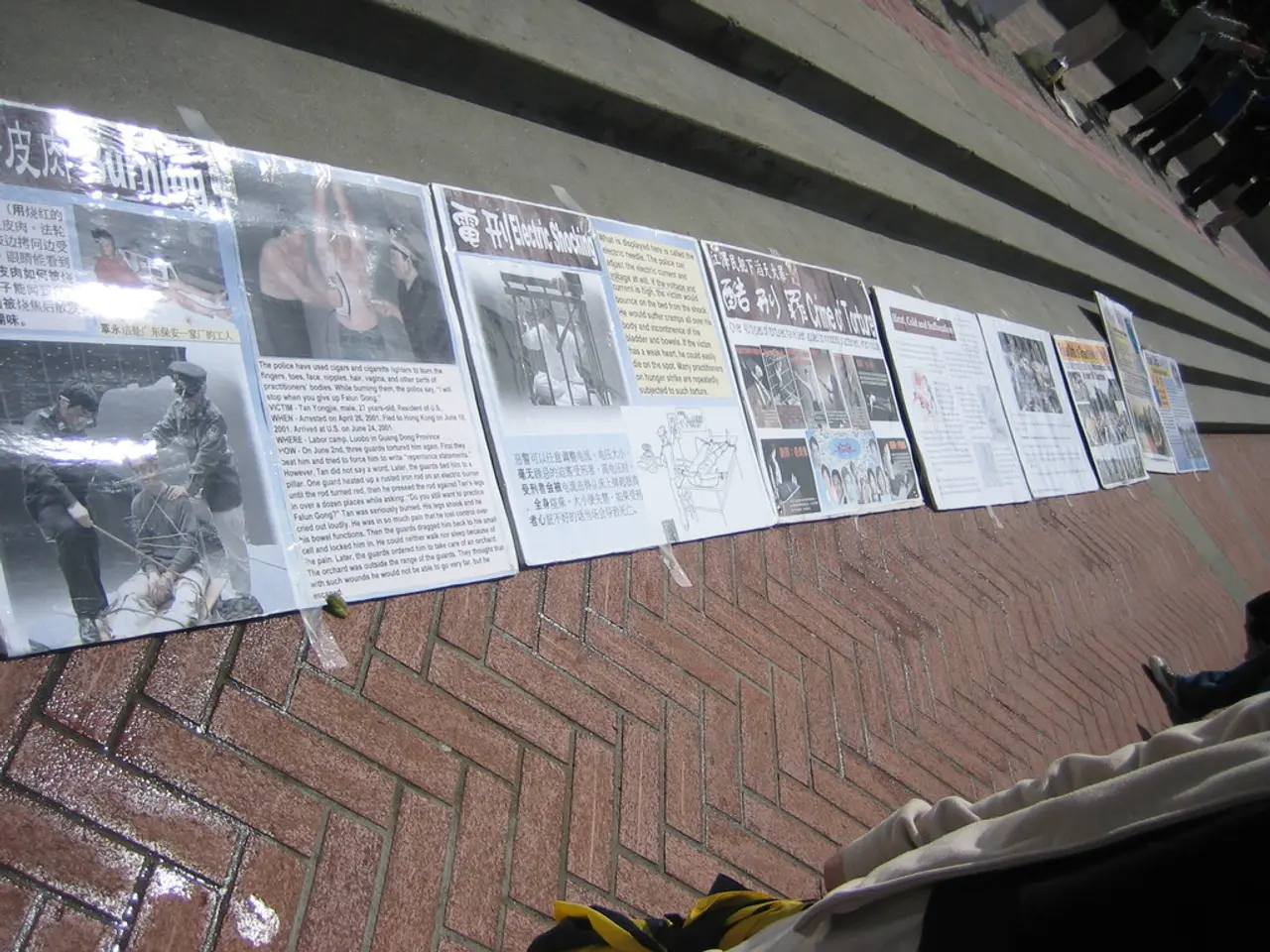Assessment of Poster House Exhibition: 'Fallout: Atoms for War and Peace'
In the heart of Manhattan, Poster House, the first museum in the United States dedicated to the art and history of posters, is currently hosting an exhibition that delves into the complex narrative of nuclear power. Entitled "Fallout: Atoms for War and Peace," the exhibit offers a captivating exploration of the historical context of the nuclear era, from the discovery of nuclear fission before World War II to the present day.
The exhibition presents the development of nuclear energy as both a symbol of progress and a catalyst for global protest. It chronicles the growth of the global nuclear industry for both peaceful and military purposes, showcasing over 60 posters that highlight the promotion of nuclear power by corporations like General Dynamics alongside anti-nuclear messages and grassroots movements that emerged in response to the dangers associated with atomic energy.
"Fallout: Atoms for War and Peace" presents a multifaceted argument surrounding nuclear power. On one hand, it showcases how nuclear power was promoted as a symbol of peace and progress, such as the U.S.'s "Atoms for Peace" campaign. On the other, it features powerful anti-nuclear messages advocating disarmament and raising awareness about the dangers of nuclear weapons and radioactive fallout.
Iconic works included in the exhibit are the General Dynamics corporate propaganda series and British anti-nuclear campaign posters like "Protect and Survive" and Peter Kennard’s “Protest and Survive,” which symbolize public resistance during the Cold War era. The exhibit also places the nuclear issue within broader cultural and political movements, tying the anti-nuclear protest movement to environmental and social justice activism in the 1970s and 1980s.
The exhibit reflects the duality of nuclear power as both a technological achievement and a source of existential threat, explored through visual propaganda, protest art, and historical narrative. It frames nuclear power within the tension between "Atoms for War" — the destructive potential of nuclear weapons — and "Atoms for Peace" — the promise and propaganda of peaceful nuclear energy.
"Fallout: Atoms for War and Peace" does not explicitly take sides but offers a historical reflection on nuclear power's public image, allowing viewers to form their own opinions on the matter. The exhibit invites viewers to think critically about how governments, corporations, and citizens have shaped and continue to shape the narrative around nuclear energy.
The exhibition serves as a testament to the power of visual culture in shaping public perception and political debates throughout the nuclear age. From the first full-scale commercial nuclear reactor opening in Shippingport, Pennsylvania in 1958, to the bombings of Hiroshima and Nagasaki in 1945 that revealed the destructive potential of nuclear fission and marked the beginning of the atomic age, "Fallout: Atoms for War and Peace" offers a compelling journey through time.
[1] Poster House. (2022). Fallout: Atoms for War and Peace. Retrieved from https://posterhouse.org/exhibitions/fallout-atoms-for-war-and-peace/ [2] The Guardian. (2003). Peter Kennard: Protest and Survive. Retrieved from https://www.theguardian.com/artanddesign/2003/jul/12/art [3] The New York Times. (2018). The Art of the Anti-Nuclear Movement. Retrieved from https://www.nytimes.com/2018/09/29/arts/design/anti-nuclear-movement-art.html
- The Poster House exhibition, titled "Fallout: Atoms for War and Peace," presents a historical analysis of nuclear power's public image, offering multiple perspectives on the topic for visitors to form their own opinions.
- The multimedia exhibit chronicles the complex narrative of the nuclear era, from the discovery of nuclear fission to the present day, featuring over 60 posters that portray the promotion of nuclear power by corporations and grassroots movements' anti-nuclear messages.
- Iconic pieces in the exhibition include the General Dynamics corporate propaganda series and British anti-nuclear campaign posters like "Protect and Survive" and Peter Kennard’s “Protest and Survive,” which symbolize public resistance during the Cold War era.
- The exhibit delves into the cultural and political movements of the 1970s and 1980s, linking the anti-nuclear protest movement to environmental and social justice activism, while highlighting the duality of nuclear power as both a technological achievement and an existential threat.
- By showcasing works that span history, visual propaganda, protest art, and historical narrative, the Poster House exhibition serves as a testament to the influential role of visual culture in shaping public perception and political debates throughout the nuclear age.




